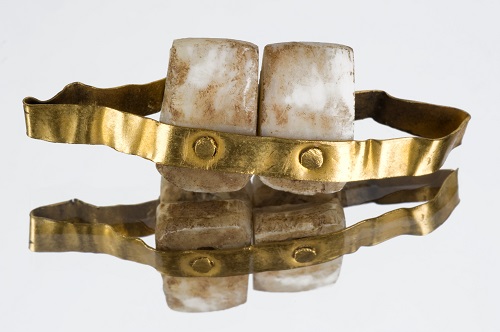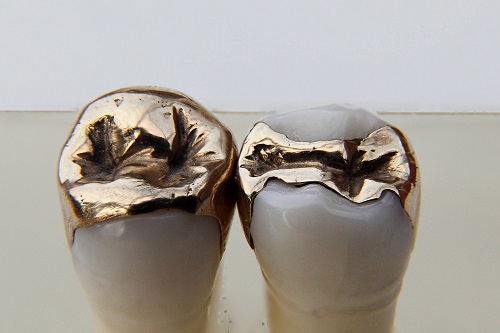Gold has been used in dentistry for thousands of years, with estimates from some historians saying that it was used as early as Ancient Egyptian times, however, this is debatable. Regardless of when exactly humans began using gold in dental restorations, it is clear that early civilizations recognized the amazing qualities of this precious metal. Not only does it have a beautiful shine to it giving off an elevated sense of status to the wearer, it is also very durable, malleable and bio-compatible.
Early use of gold in dentistry
The earliest finding of what is suggested to be dental work using gold is from a burial shaft at Giza pyramid in Egypt believed to date back to 2500 B.C. In this burial site an archaeologist found two molars bound together by gold wire. Some dental historians believe that this gold wire was used as a type of ancient brace to hold a loose tooth in place by anchoring it to a stable tooth, while others argue that the gold wire was used to bind the teeth together after the subjects death in preparation for embalming the corpse.
The first accepted evidence of an attempt at placing prosthetic teeth also had gold as a key material used. These artifacts are from the Etruscans around 700 B.C. consisting of a gold band that uses the adjacent teeth to a gap as anchors to hold a prosthetic tooth in place. The prosthesis was either the actual persons lost tooth with the root cut off or a piece of tooth from a cow, and in some rarer cases, a fake tooth constructed out of gold.
This early use of gold in dentistry is essentially the first form of dental braces, which are now primarily made out of stainless steel. It is believed that gold was used as the metal of choice to hold loose teeth in place for several reasons including it’s:
- strength and malleability
- Ability to withstand corrosive oral fluids (as opposed to silver which would turn green within a few days)
Gold used as a filling

Gold used in dental fillings to cover cavities dates back to the 1500’s and is recorded in the first printed book on dentistry with the following instructions:
Scrape and clean the hole and the area of decay with a fine small chisel or a little knife or a file, or with another suitable instrument, and then to preserve the other part of the tooth, fill the cavity with gold leaves.
This method, however, was not very efficient until it was greatly improved upon by Robert Arthur in the 19th century. Arthur used thin sheets of gold foil instead to fill the cavities and heated the gold to disinfect it before placing it into the cavity. Modernized methods are still used today to fill cavities with a gold alloy filling material, however, other cheaper options are more popular in most parts of the world.